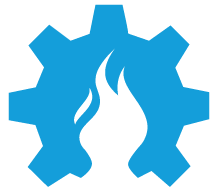# Design premises
# Enable FAIR principles by design
The implementation of frameworks and tools for communities of practice determine the likelihood to adopt FAIR principles. We have to make tools that make FAIR desirable, evident and necessesary, and not an extra step that require a lot of effort and complexity in the workflow of users.
# Support local and offline first workflows
- Users should be able to edit and document in the context of their local projects which tend to exist in the file system of the users.computers.
- In software documentation projects tend to live close to the source code, and digital objects associated with the documentation and metadata. Very similar to software contemporary workflows.
# Support the use of standards for different knowledge domains
- We should enable the import and usage of standards specified in formats like json schemas (opens new window) or xml schemas (opens new window).
# Easy metadata editing in local environments
- Users should be able to use metadata standards easily in the context of their project documents and repositories.
- Metadata should be easy to generate and edit in local environments.
- Metadata should be easy to publish once created locally.
- Metadata should be easy to add during documentation and develop organically during the actual project development not only after projects are finished.
# Private first collaboration
- Projects should be first private and then public when users decide is the time to share their documents.
# Integrate with the cloud using a hybrid approach
- Respecting the local first principle, the documents and databases can also be shared and managed openly or in closed groups.
# As a fundamental, architect for a fully global capability
- Anticipating features which will grow to ever more effectively support co-creation, with its FAIR and OPEN concepts has been from initiation our basis.
- Equally and often related, from earliest moments architecture has been designed to be capable in principle of widely distributed geographic reach, and to meet the potential for the levels of access flow that a fully popular and promoted Hardocs might be imagined to engage.
- We as much appreciate the small. Hardocs Cloud is already operating on the internet with the tiniest sizing of inexpensive server droplet, and in some views of possible needs, could as easily in present form be incorporated standalone, within a fully private arena.
- On another hand, the Habitat access api framework of Hardocs is independent of the interior services it manages. This means that given decisions made with community on needs, in careful mind of actual contemporary abilities, even more advantageous foundations can be possible, including where we already have some enlightening experience.
- It's well to be aware that all of this is grounded in firm application of the best open-source-available security, via Oauth2 identity deterimination, and our own administrative permissions layering.
- Open futures, then, always with primary security and data reliability, are what the Hardocs architecture has been intended to provide.
Features →




